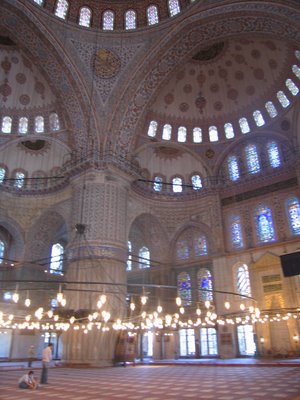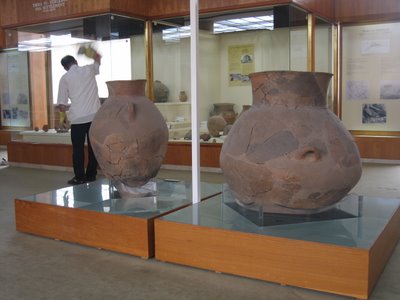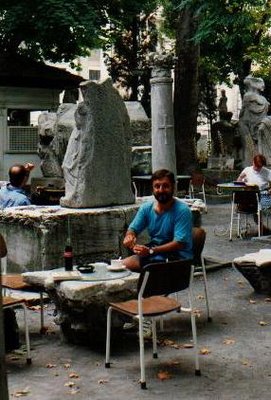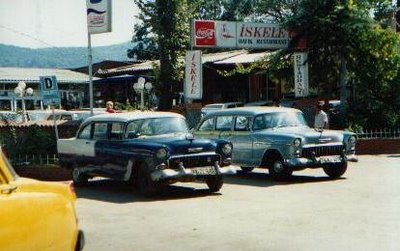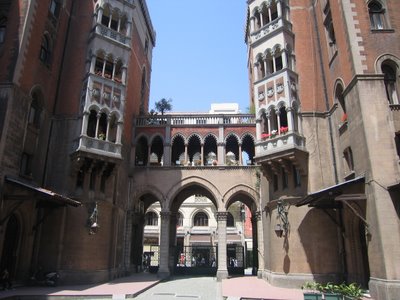
Looking towards the Aya Sofya from the Blue Mosque.

Interior gallery


View looking out from gallery

Aya Sofya 13 July 1989

Arguably İstanbul's most famous building. There are a million photos of it, so in my most recent trip I tried to take some "different" ones, hence the dark spaces in the Gallery.
Inside is simply astounding, and I stare in awe at the architectural miracle that enabled this to be finished in 537. How does that central dome soar above with seemingly no support? [By the way, it has been replaced several times after earthquakes] The answer is that it is supported by 40 massive ribs constructed of special hollow bricks, made in Rhodes, resting on four huge pillars concealed in the interior walls. Almost 1000 years later, the great architect, Sinan, used the same technique in designing the Süleymaniye Mosque.
It was the greatest Christian church of all until 1453, when Mehmet the Conqueror turned it into a mosque. Being equally as significant to Christians and Moslems, I think Atatürk did the right thing turning it into a museum in 1934, so everyone can appreciate its magnificence.
Uncovering the mosaics (covered in plaster, but not destroyed, during the Islamic period) and restoration continues, and there is usually scaffolding, but that does not detract from a visit to this World Heritage site.




